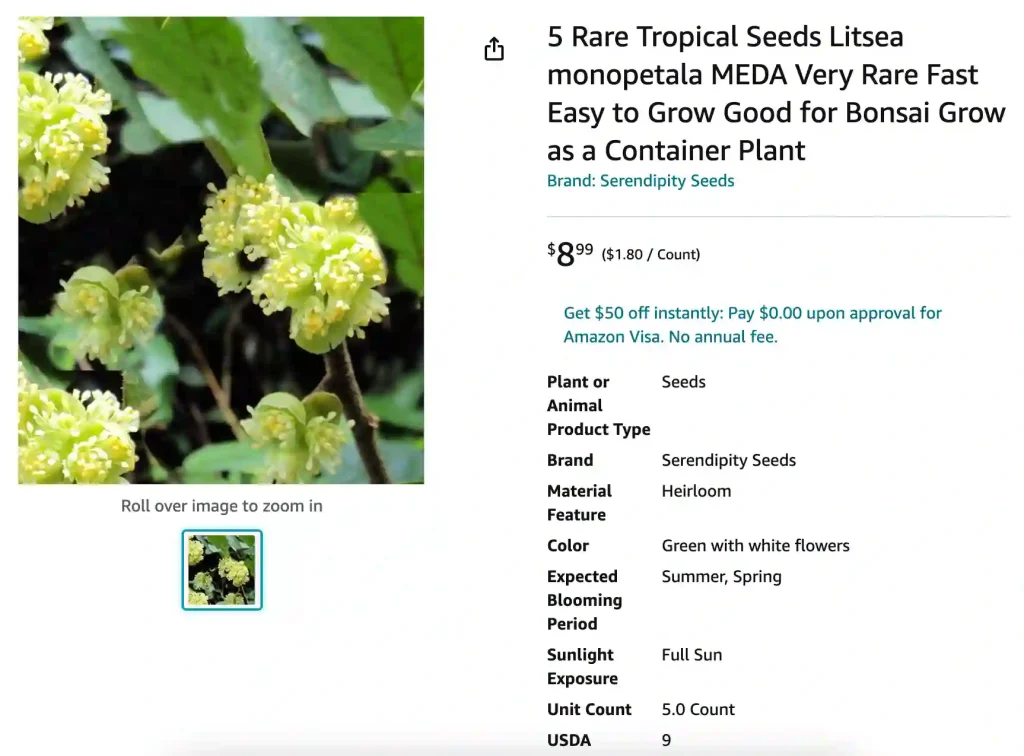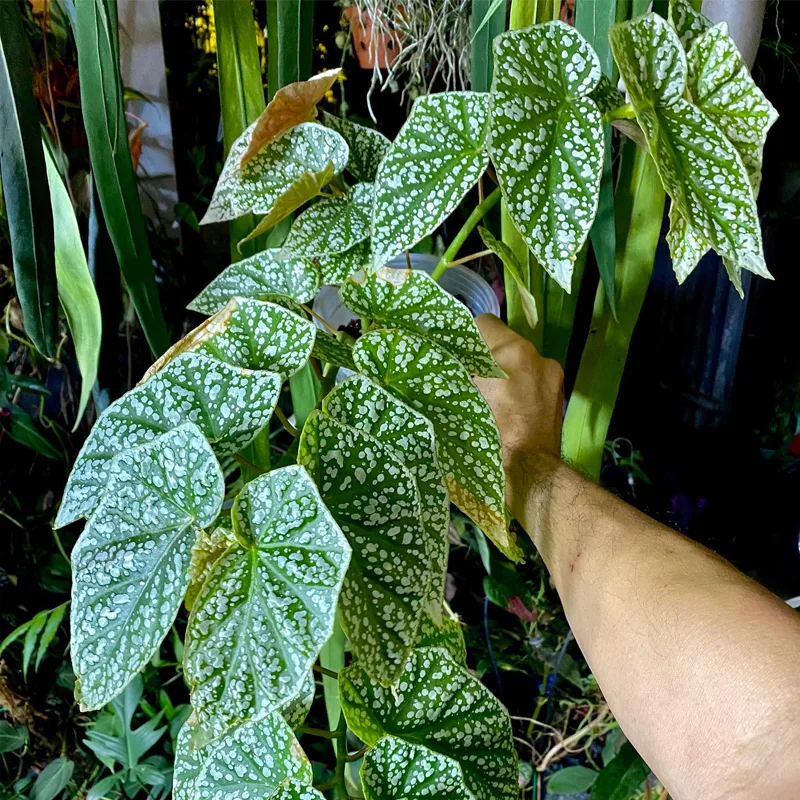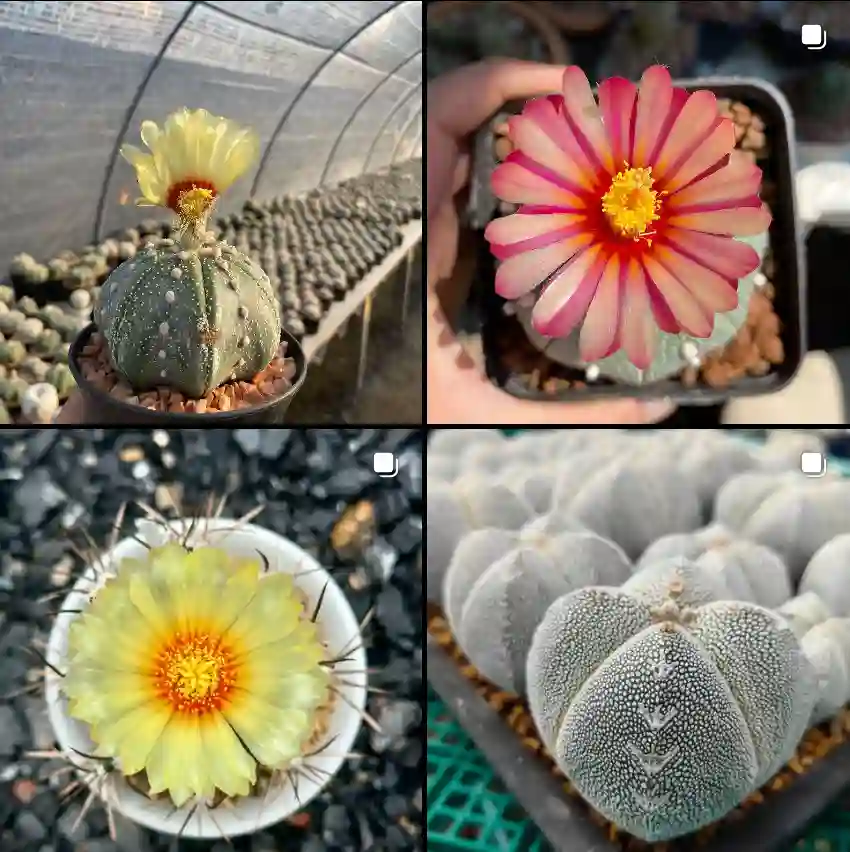
Frequently Asked Questions About the Litsea Genus
When I first discovered the Litsea genus, I was drawn to its versatility and unique qualities. Litsea has a range of uses, from essential oils to ornamental purposes, and offers a sensory experience that’s both aromatic and therapeutic. With so many people curious about this intriguing plant, I’ve compiled some frequently asked questions to help you better understand Litsea and its many benefits.
What is Litsea?
Litsea is a genus of evergreen trees and shrubs belonging to the Lauraceae family. There are hundreds of species, but the most popular is Litsea cubeba, commonly known as May Chang. Native to Southeast Asia, this plant is known for its citrusy aroma and small fruits, often used in essential oils. You’ll find Litsea trees in tropical and subtropical climates, where they thrive in warm temperatures and moderate humidity.
Litsea species
- Litsea aban-gibotii Ng
- Litsea accedens (Blume) Boerl.
- Litsea accedentoides Koord. & Valeton
- Litsea acrantha Ridl.
- Litsea acutivena Hayata
- Litsea aestivalis (L.) Fernald
- Litsea akoensis Hayata
- Litsea alba Kosterm.
- Litsea albayana S.Vidal
- Litsea albescens (Hook.f.) D.G.Long
- Litsea albicans (Kurz) Hook.f.
- Litsea albida (Kosterm.) Kosterm.
- Litsea alleniana A.C.Sm.
- Litsea alveolata C.K.Allen
- Litsea amicorum Kosterm.
- Litsea anamalayana Robi & Udayan
- Litsea anamo Kosterm.
- Litsea andreana Ng
- Litsea aneityensis Guillaumin
- Litsea angulata Blume
- Litsea anomala Merr.
- Litsea areolata (Blume) Boerl.
- Litsea artocarpifolia Gamble
- Litsea assamica Hook.f.
- Litsea aurea Kosterm.
- Litsea auricolor Kosterm.
- Litsea auriculata S.S.Chien & W.C.Cheng
- Litsea australis B.Hyland
- Litsea bainingensis Rech.
- Litsea balansae Lecomte
- Litsea banaensis de Kok
- Litsea barringtonioides Kosterm.
- Litsea baruringensis Elmer
- Litsea baticulin (Blanco) Kosterm.
- Litsea baviensis Lecomte
- Litsea beilschmiediifolia H.W.Li
- Litsea bennettii B.Hyland
- Litsea bernhardensis C.K.Allen
- Litsea beusekomii Kosterm.
- Litsea biflora H.P.Tsui
- Litsea bindoniana (F.Muell.) F.Muell.
- Litsea boerlagei Kosterm.
- Litsea borneensis (Meisn.) Boerl.
- Litsea bourdillonii Gamble
- Litsea brachypoda C.K.Allen
- Litsea brachystachya (Blume) Fern.-Vill.
- Litsea brassii O.C.Schmidt
- Litsea brawas (Blume) Boerl.
- Litsea brevipes Kosterm. ex H.H.Pham
- Litsea breviumbellata C.K.Allen
- Litsea brookeana Kosterm.
- Litsea buinensis Kosterm.
- Litsea burckelloides A.C.Sm.
- Litsea calicaris (Sol. ex A.Cunn.) Benth. & Hook.f. ex Kirk
- Litsea calophylla (Miq.) Mansf.
- Litsea calophyllantha K.Schum.
- Litsea cambodiana Lecomte
- Litsea cangyuanensis J.Li & H.W.Li
- Litsea caroli Teschner
- Litsea carrii Kosterm.
- Litsea castanea Hook.f.
- Litsea catubigensiskos Kosterm.
- Litsea caulocarpa Merr.
- Litsea ceramensis Kosterm.
- Litsea chartacea (Wall. ex Nees) Hook.f.
- Litsea chengshuzhii H.P.Tsui
- Litsea chewii Kosterm.
- Litsea chinpingensis Yen C.Yang & P.H.Huang
- Litsea chrysoneura Kosterm.
- Litsea chrysophoena (Blume) Boerl.
- Litsea chrysopleura (Blume) Boerl.
- Litsea chunii W.C.Cheng
- Litsea citronella Kosterm.
- Litsea clarissae (Teschner) Kosterm.
- Litsea clarkei Prain
- Litsea claviflora Gamble
- Litsea clemensii C.K.Allen
- Litsea coelestis H.P.Tsui
- Litsea collina S.Moore
- Litsea complanata C.K.Allen
- Litsea confusa Koord. & Valeton
- Litsea connorsii B.Hyland
- Litsea cordata (Jack) Hook.f.
- Litsea coreana H.Lév.
- Litsea coriacea (B.Heyne ex Nees) Hook.f.
- Litsea costalis (Nees) Kosterm.
- Litsea crassifolia (Blume) Boerl.
- Litsea crebriflora S.Moore
- Litsea crenata C.K.Allen
- Litsea cubeba (Lour.) Pers. Plant FAQs: Litsea Cubeba
- Litsea cuprea Merr.
- Litsea curtisii Gamble
- Litsea cuspidata (Blume) Boerl.
- Litsea cuttingiana C.K.Allen
- Litsea densiflora (Teschner) Kosterm.
- Litsea deplanchei Guillaumin
- Litsea depressa H.P.Tsui
- Litsea dielsiana Teschner
- Litsea dilleniifolia P.Y.Pai & P.H.Huang
- Litsea diospyrifolia Quisumb.
- Litsea discocalyx Kosterm.
- Litsea discolor (Blume) Zipp. ex Boerl.
- Litsea diversifolia Blume
- Litsea domarensis O.C.Schmidt
- Litsea dorsalicana M.Q.Han & Y.S.Huang
- Litsea doshia (D.Don) Kosterm.
- Litsea dunniana H.Lév.
- Litsea elliptica Blume
- Litsea ellipticibacca Merr.
- Litsea elmeri Merr.
- Litsea elmeriana Rasingam & Karthig.
- Litsea elongata (Nees) Hook.f.
- Litsea engleriana Teschner
- Litsea erectinervia Kosterm.
- Litsea eugenioides A.Chev. ex H.Liu
- Litsea exsudens Kosterm.
- Litsea fenestrata Gamble
- Litsea ferruginea (Blume) Blume
- Litsea ficoidea Kosterm.
- Litsea filipedunculata Kosterm.
- Litsea flexuosa (Blume) Boerl.
- Litsea floribunda (Blume) Gamble
- Litsea fluminensis Kosterm.
- Litsea fo K.Schum. & Lauterb.
- Litsea formanii Kosterm.
- Litsea forstenii (Blume) Boerl.
- Litsea fosbergii Kosterm.
- Litsea foveola Kosterm.
- Litsea fulva (Blume) Fern.-Vill.
- Litsea fulvosericea C.K.Allen
- Litsea garciae S.Vidal
- Litsea gardneri (Thwaites) Meisn.
- Litsea gemelliflora (Miq.) Boerl.
- Litsea ghatica Saldanha
- Litsea gigaphylla Kosterm.
- Litsea gilgiana Teschner
- Litsea glaberrima (Thwaites) Trimen
- Litsea glabrata (Wall. ex Nees) Hook.f.
- Litsea glabrifolia Ridl.
- Litsea glaucescens Kunth
- Litsea globifera Kosterm.
- Litsea globosa Kosterm.
- Litsea globularia Ng
- Litsea glutinosa (Lour.) C.B.Rob.
- Litsea gongshanensis H.W.Li
- Litsea gorayana Udayan & Robi
- Litsea gracilipes Hook.f.
- Litsea grandifolia Lecomte
- Litsea grandis (Nees) Hook.f.
- Litsea granitica B.Hyland
- Litsea grayana A.C.Sm.
- Litsea greenmaniana C.K.Allen
- Litsea grisea (Blume) Boerl.
- Litsea guppyi (F.Muell.) Forman
- Litsea habbemensis C.K.Allen
- Litsea hayatae Kaneh.
- Litsea helferi Hook.f.
- Litsea henricksonii Kosterm.
- Litsea himalayensis R.Kr.Singh
- Litsea hirsutissima Gamble
- Litsea hirta (Blume) Boerl.
- Litsea honbaensis de Kok
- Litsea honghoensis H.Liu
- Litsea hookeri (Meisn.) D.G.Long
- Litsea hornei A.C.Sm.
- Litsea humboldtiana Guillaumin
- Litsea hunanensis Yen C.Yang & P.H.Huang
- Litsea hupehana Hemsl.
- Litsea hutchinsonii Merr.
- Litsea hypophaea Hayata
- Litsea ichangensis Gamble
- Litsea ilocana Merr.
- Litsea imbricata Guillaumin
- Litsea impressa (Blume) Boerl.
- Litsea imthurnii Turrill
- Litsea indoverticillata Robi & Udayan
- Litsea insignis (Blume) Boerl.
- Litsea intermedia (Blume) Boerl.
- Litsea irianensis Kosterm.
- Litsea japonica (Thunb.) Juss.
- Litsea jaswirii Ng
- Litsea johorensis Gamble
- Litsea kakkachensis R.Ganesan
- Litsea kauloensis Teschner
- Litsea keralana Kosterm.
- Litsea kerrii Kosterm.
- Litsea kingii Hook.f.
- Litsea kobuskiana C.K.Allen
- Litsea kurzii King ex Hook.f.
- Litsea kwangsiensis Yen C.Yang & P.H.Huang
- Litsea kwangtungensis H.T.Chang
- Litsea laeta (Nees) Trimen
- Litsea laevifolia Kosterm. ex H.H.Pham
- Litsea laevigata (Nees) Gamble
- Litsea lanceolata (Blume) Kosterm.
- Litsea lancifolia (Roxb. ex Nees) Fern.-Vill.
- Litsea lancilimba Merr.
- Litsea lecardii Guillaumin
- Litsea ledermannii Teschner
- Litsea leefeana (F.Muell.) Merr.
- Litsea leiantha (Kurz) Hook.f.
- Litsea leytensis Merr.
- Litsea liboshengii H.P.Tsui
- Litsea ligustrina (Nees) Fern.-Vill.
- Litsea lithocarpoides Kosterm.
- Litsea litseifolia (C.K.Allen) Yen C.Yang & P.H.Huang
- Litsea longepedunculata Kosterm.
- Litsea longipedicellata Kosterm.
- Litsea longipes (Meisn.) Hook.f.
- Litsea luzonica (Blume) Fern.-Vill.
- Litsea machilifolia Gamble
- Litsea machiloides Yen C.Yang & P.H.Huang
- Litsea mafuluensis C.K.Allen
- Litsea magnifolia Gillespie
- Litsea maingayi Hook.f.
- Litsea maluensis Teschner
- Litsea manilaliana Robi & Udayan
- Litsea martabanica (Kurz) Hook.f.
- Litsea mathuataensis A.C.Sm.
- Litsea megalophylla Merr.
- Litsea megamalayana Karupp., V.Ravich. & Bharath
- Litsea meghalayensis R.Kr.Singh
- Litsea mekongensis Lecomte
- Litsea melchioriana (Teschner) Kosterm.
- Litsea mellifera A.C.Sm.
- Litsea membranifolia Hook.f.
- Litsea meyeri Kosterm.
- Litsea miana Guillaumin
- Litsea micrantha Merr.
- Litsea minor Teschner
- Litsea miqueliana (Kuntze) ined.
- Litsea mishmiensis Hook.f.
- Litsea mollis Hemsl.
- Litsea monopetala (Roxb.) Pers.
- Litsea montis-dulit Airy Shaw
- Litsea morobensis C.K.Allen
- Litsea morotaiensis Kosterm.
- Litsea morrisonensis Hayata
- Litsea moupinensis Lecomte
- Litsea muellerorum I.M.Turner
- Litsea myristicifolia (Wall. ex Nees) Hook.f.
- Litsea mysorensis Gamble
- Litsea nemoralis (Thwaites) Trimen
- Litsea neocaledonica S.Moore
- Litsea neohebridensis Kosterm.
- Litsea nervosa (Meisn.) Grierson & D.G.Long
- Litsea nhatrangensis de Kok
- Litsea nicobarica Bhuinya & P.Singh
- Litsea nigrescens Gamble
- Litsea nigricans (Meisn.) Boerl.
- Litsea nitida (Roxb. ex Nees) Hook.f.
- Litsea noronhae Blume
- Litsea novoguinensis Teschner
- Litsea novoleontis Bartlett
- Litsea nuculanea (Kurz) Hook.f.
- Litsea oblongifolia Merr.
- Litsea obscura (Blume) Boerl.
- Litsea oleoides (Meisn.) Hook.f.
- Litsea oligophlebia H.T.Chang
- Litsea oppositifolia Gibbs
- Litsea orocola Kosterm.
- Litsea ovalifolia (Wight) Trimen
- Litsea ovalis Kosterm.
- Litsea pallens Lundell
- Litsea pallida (Blume) Boerl.
- Litsea pallidifolia Merr.
- Litsea palmatinervia (Meisn.) Benth. & Hook.f. ex Drake
- Litsea palustris Kosterm.
- Litsea panamanja (Buch.-Ham. ex Nees) Hook.f.
- Litsea papillosa C.K.Allen
- Litsea papuana K.Schum.
- Litsea parvifolia (Hemsl.) Mez
- Litsea pedicellata Bartlett
- Litsea pedunculata (Diels) Yen C.Yang & P.H.Huang
- Litsea penangiana Hook.f.
- Litsea pentaflora Guillaumin
- Litsea pentagona Merr.
- Litsea perfulva Elmer
- Litsea perglabra C.K.Allen
- Litsea perlucida C.K.Allen
- Litsea perrottetii (Blume) Fern.-Vill.
- Litsea philippinensis Merr.
- Litsea phuwuaensis Ngerns.
- Litsea pickeringii (A.Gray ex Seem.) Benth. & Hook.f. ex Drake
- Litsea pittosporifolia Yen C.Yang & P.H.Huang
- Litsea plateifolia Elmer
- Litsea polyneura (Meisn.) Boerl.
- Litsea populifolia Gamble
- Litsea pringlei Bartlett
- Litsea prolixa S.Moore
- Litsea propinqua (Blume) Boerl.
- Litsea pruriens Kosterm.
- Litsea pseudoelongata H.Liu
- Litsea pseudoumbellata Kosterm.
- Litsea psilophylla Kosterm.
- Litsea pumila Kosterm.
- Litsea punctata (Blume) Boerl.
- Litsea punctulata Kosterm.
- Litsea pungens Hemsl.
- Litsea quadrangularis Kosterm.
- Litsea quercoides Elmer
- Litsea racemosa C.T.White
- Litsea rangoonensis (Meisn.) Hook.f.
- Litsea resinosa Blume
- Litsea reticulata (Meisn.) Benth. & Hook.f. ex F.Muell.
- Litsea richii A.C.Sm.
- Litsea ridleyi Gamble
- Litsea rigidifrons Kosterm.
- Litsea riparia (Blume) Boerl.
- Litsea ripidion Guillaumin
- Litsea robusta Blume
- Litsea rotundata (Blume) Kosterm.
- Litsea rotundifolia (Nees) Hemsl.
- Litsea rubescens Lecomte
- Litsea rubicunda Kosterm.
- Litsea rubiginosa (Blume) Boerl.
- Litsea rubra Blume
- Litsea rubrobrunnea de Kok
- Litsea salicifolia (Roxb. ex Nees) Hook.f.
- Litsea saligna (Nees) N.P.Balakr.
- Litsea salmonea A.Chev. ex Dao
- Litsea samoensis (Christoph.) A.C.Sm.
- Litsea sandakanensis Merr.
- Litsea santapaui Kosterm.
- Litsea schlechteri Teschner
- Litsea seemannii (Meisn.) Benth. & Hook.f. ex Drake
- Litsea segregata Elmer
- Litsea semecarpifolia (Wall. ex Nees) Hook.f.
- Litsea sepikensis Kosterm.
- Litsea sericea (Wall. ex Nees) Hook.f.
- Litsea sessiliflora Hook.f.
- Litsea sessilifructa (C.J.Qi & K.W.Liu) L.Wu & J.J.Zhou
- Litsea sessilis Boerl.
- Litsea siamensis van der Werff
- Litsea sinoglobosa J.Li & H.W.Li
- Litsea solomonensis C.K.Allen
- Litsea spathulata Kosterm.
- Litsea spathuliformis Munzinger & McPherson
- Litsea sphaerocarpa Blume
- Litsea staintonii Kosterm.
- Litsea steenisii Kosterm.
- Litsea stenophylla Guillaumin
- Litsea stickmanii Merr.
- Litsea stocksii (Meisn.) Hook.f.
- Litsea subauriculata Kosterm.
- Litsea subcoriacea Yen C.Yang & P.H.Huang
- Litsea suberosa Yen C.Yang & P.H.Huang
- Litsea suboppositifolia Ng
- Litsea subovata (Miq.) Kosterm.
- Litsea subumbelliflora (Blume) Ng
- Litsea sulavesiana Kosterm.
- Litsea sumatrana (Miq.) Boerl.
- Litsea szemaois (H.Liu) J.Li & H.W.Li
- Litsea talaumifolia Kosterm.
- Litsea tannaensis Guillaumin
- Litsea taronensis H.W.Li
- Litsea tenuipes Ridl.
- Litsea tetranthera Mirb.
- Litsea tharpiana Standl.
- Litsea thorelii Lecomte
- Litsea tibetana Yen C.Yang & P.H.Huang
- Litsea timonioides Kosterm.
- Litsea tomentosa Blume
- Litsea travancorica Gamble
- Litsea trichophylla Kosterm.
- Litsea triflora Guillaumin
- Litsea tsinlingensis Yen C.Yang & P.H.Huang
- Litsea tuberculata (Blume) Boerl.
- Litsea turfosa Kosterm.
- Litsea udayanii Robi
- Litsea umbellata (Lour.) Merr.
- Litsea uniflora Guillaumin
- Litsea unita (Blume) Boerl.
- Litsea urdanetensis Elmer
- Litsea utilis (Meisn.) Boerl.
- Litsea vang Lecomte
- Litsea vanoverberghii Merr.
- Litsea variabilis Hemsl.
- Litsea varians (Blume) Boerl.
- Litsea veitchiana Gamble
- Litsea velutina (Blume) Boerl.
- Litsea venulosa (Meisn.) Hook.f.
- Litsea versteeghii C.K.Allen
- Litsea verticillata Hance
- Litsea verticillifolia Yen C.Yang & P.H.Huang
- Litsea virens (Nees) Boerl.
- Litsea viridis H.Liu
- Litsea vitiana (Meisn.) Benth. & Hook.f. ex Drake
- Litsea walkeri Trimen
- Litsea whiteana C.K.Allen
- Litsea whitfordii Merr.
- Litsea wightiana (Nees) Wall. ex Hook.f.
- Litsea wilsonii Gamble
- Litsea xanthophylla (Blume) Boerl.
- Litsea yaoshanensis Yen C.Yang & P.H.Huang
- Litsea yunnanensis Yen C.Yang & P.H.Huang
What Does Litsea Smell Like?
The scent of Litsea, particularly from Litsea cubeba, is fresh, lemony, and slightly floral. Imagine a blend of lemongrass and citrus fruits, with a hint of spice in the background. The aroma is often described as uplifting and refreshing, making it a popular ingredient in perfumes, soaps, and aromatherapy.
What is Litsea Essential Oil?
Litsea essential oil is extracted from the fruits of the Litsea cubeba plant through steam distillation. It’s a light, citrus-scented oil with a bright, invigorating fragrance. In aromatherapy, Litsea oil is often used for its mood-lifting properties. It also has antimicrobial, anti-inflammatory, and astringent qualities, making it useful in skincare products.
What is Litsea Essential Oil Used For?
Litsea essential oil has several applications. I often use it in diffusers to help uplift the mood and reduce stress. Its antimicrobial properties make it a great addition to cleaning products, while its astringent nature is beneficial in skincare routines to tone and purify the skin. Some people use Litsea oil to alleviate respiratory issues, thanks to its decongestant properties. It’s also great for combating oily skin and acne due to its cleansing abilities.
What is Litsea Good For?
Litsea is good for many things. Its essential oil is prized for emotional balance, helping to reduce anxiety and uplift the spirits. In skincare, Litsea oil can help tone and tighten the skin while managing acne. Its antimicrobial and antifungal properties also make it useful for cleaning, especially when you want to add a fresh scent to your home. Some people use it in massage blends for its anti-inflammatory effects, soothing sore muscles and joints.
How to Use Litsea Oil?
There are several ways I like to use Litsea oil. For aromatherapy, I’ll add a few drops to my diffuser to create a calming and energizing environment. It can also be added to a carrier oil and applied topically to help with skin conditions or mixed into lotions and creams for a refreshing scent. Litsea oil works well in homemade cleaning solutions too—just mix it with water and vinegar for a natural disinfectant. However, always dilute it properly when applying to the skin.
Is Litsea Photosensitive?
One important thing to know is that Litsea oil is not photosensitive, meaning it doesn’t cause adverse reactions when exposed to sunlight. This makes it safe to use in skincare products, unlike other citrus oils like lemon or bergamot, which can lead to skin irritation when exposed to UV rays.
Is Litsea Safe for Dogs?
Litsea oil should be used with caution around pets, including dogs. While it’s not considered toxic, essential oils, in general, can cause adverse reactions in pets, especially when used in high concentrations. I would recommend consulting your vet before using Litsea oil around your dog to ensure safety. If you diffuse it at home, make sure your dog can leave the room if they find the scent overwhelming.
Is Litsea Safe for Internal Use?
Ingesting Litsea oil is generally not recommended unless under the supervision of a healthcare professional. While some essential oils are used internally for therapeutic purposes, Litsea oil may cause irritation or toxicity when taken orally. It’s best to stick to external applications like diffusion or topical use.
What Does Litsea Taste Like?
If you’re curious about the taste, Litsea fruits are often described as slightly tangy with a hint of spice. The flavor is not typically used in culinary applications but is more common in traditional medicine. The oil itself is not consumed due to potential irritation, but the fruits may sometimes be incorporated into herbal remedies.
Can You Grow Litsea Indoors?
Growing Litsea indoors can be challenging because the plant prefers warm, tropical environments. However, with the right care, such as plenty of sunlight and a humid environment, you might succeed with smaller species or young plants. Just make sure to give it ample light, and water regularly, as Litsea enjoys moist but well-drained soil.
How to Care for Litsea Plants?
Caring for Litsea requires the right climate and attention to its needs. These plants thrive in full sun to partial shade and prefer consistently moist, well-drained soil. If you live in a tropical or subtropical region, you can plant them outdoors, but they also make great additions to greenhouses. Fertilize the plant during the growing season and water regularly, making sure not to let the soil dry out completely.
Is Litsea Toxic?
Litsea is generally safe for humans, though, as with any plant, it’s a good idea to avoid ingesting large amounts of the fruit or leaves without proper guidance. The essential oil, while beneficial in many ways, should not be consumed internally. As mentioned earlier, use caution with pets, and always consult an expert if unsure.
If i die, water my plants!



